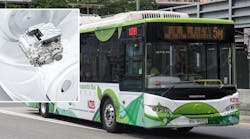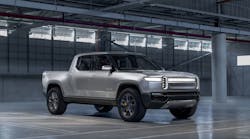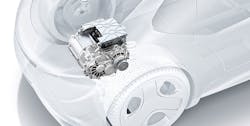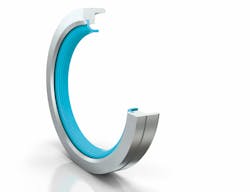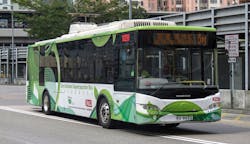The electric vehicle (EV) market is growing globally, with no apparent sign of stopping. According to an article by Neil Oliver, technical marketing manager at Accutronics, one out of every 12 cars purchased in the UK is an EV. In 2018, sales in the U.S. increased by 81%. In the same year, EVs made up almost one-third of all car sales in Norway. Additionally, according to CleanTechnica, EVs sales are up 70% across Europe. With a growing market, the following will look at the trends in the electrical vehicle industry to see how EVs will impact the supply chain, materials, and driving.
Supply Chain
Like something ripped out of the novel Atlas Shrugged, lithium batteries are in higher demand than Rearden Metal. The question becomes, where are high-grade batteries most valuable, and how should materials operate? Currently, the materials market operates according to traditional supply and demand. However, when EVs demand much more material than other industries, the demand might cause a pain point in the electronic, medical, and tool markets.
New technology in digital manufacturing are aiding in everything from design to the supply chain. Dassault Systemes’ 3DEXPERIENCE platform offers a Electro-Mobility Accelerator that is being used by multiple EVs manufacturers. (Credit: Dassault Systemes)
According to Oliver, the battery packs in Tesla’s Model S and Model X cars contain between 7,100 and 8,300 cells, depending on the energy rating of the battery. By comparison, a smartphone is powered by a single cell, while a portable power tool might use eight cells. Oliver’s fear is that this will create a problem in the supply chain for these materials for lower-volume customers. Currently, this concern doesn’t seem to have suppliers panicked.
There is also a concern that lithium-ion battery packs are mined unethically. However, there is a lot of confusion surrounding this. While even materials like cobalt are linked to countries with abysmal human rights and environmental records, many companies are curbing supply chains to only accept materials by ethical means. In addition, the materials used in lithium-ion battery packs are not rare Earth metals. However, this doesn’t entirely negate supply chain concerns. If regulations are trying to curb pollution, moving forward it will be imperative companies employ ethical production processes for raw materials.
Materials
Some materials often not though of when talking about electrification are aluminum (Al), magnesium (Mg), and composites. The World Auto Steel (WAS) organization has many resources on how lighter doesn’t always mean better for the environment. Many regulations are centered around environmental concerns, so it can be easy to focus on the tailpipe. WAS analyzes how the entire lifecycle of a lighter material, from cradle to recycling, may outweigh the environmental benefits.
In a report from WAS, Al cost about three times the cost of high-strength steel, and after a lifecycle evaluation found that there was an additional 1% of added CO2 emissions. In mass production even a 1% difference can add up to a lot of energy.
According to WAS, Al has a much more complicated extraction and refining process. Production takes almost eight times as much energy per kilogram as the production of steel. In another report, WAS claims producing Al emits seven times the amount of CO2 than steel. For a fleet of 700,000 vehicles, this means a high-strength, steel-intensive design saves approximately 1.7 million metric tons of CO2 total life cycle emissions over the Al-intensive vehicle.
While lightweighting is a concern for most vehicle electrics, one of the big concerns for EVs is the miles per charge and cost per mile. Range and cost are closely tied to materials used in design. “Although the sale of electric cars is growing, mass adoption remains a pipe dream,” says Harlan Hart, technical manager at eMobility. “And it will remain so until electric cars deliver the same mileage per battery charge as a tank of gasoline.”
The e-Axle is a compact, cost-attractive electric drive solution for battery-electric vehicles and hybrid applications. The electric motor, power electronics, and transmission are combined in a compact unit directly powering the vehicle’s axle. Additionally, the powertrain becomes cheaper, more compact, and more efficient. (Credit: Bosch Mobility Solutions)
Metals aren’t the only materials EV are focusing on. Polymers are saving weight and helping insulate vehicles to reduce noise and HVAC use. Reducing the need for HVAC will take less energy from the batteries, which can improve an EV’s range. There are even more advanced developments that are seeing specialized materials in sealing solutions.
In electric vehicles, the e-axle is a critical component that performs the function of an engine and transmission combined. It is an electro-mechanical propulsion system contained in an axle structure that houses an electric motor, power electronics, and some form of gearing/differential. All of this fits within the traditional engine space. The motor and gearbox are directly coupled. And while the gearbox requires efficient lubrication, it is essential that the motor remain dry. To facilitate this, a highly reliable seal is required between these two components.
The difficulty in sealing this system is that electric motors run most efficiently at high speeds. Gasoline engines normally run at 2,000 to 4,000 revolutions per minute (RPM). The electrically-driven transmission runs up to eight times faster, typically at 16,000 RPM. In the future, this is likely to increase significantly.
The rotational speed limit for traditional seals in today’s e-axle is around 100 feet per second. However, to maximize efficiency, the theoretical optimal rotational surface speed of the e-axle would be greater than 200 feet per second¾a speed that is currently impossible to achieve, according to Hart.
“Newer seals are helping to minimize friction and minimize power loss in electric vehicles,” says Harlan Hart, technical manager at eMobility.
However, newly developed seals passed the accelerated load cycle test with no leakage and no wear on the sealing lip or shaft. In fact, the wear on the running surface was barely noticeable and Finite Element Analysis (FEA) results all proved positive. The one seal utilizes polytetrafluoroethylene (PTFE) based material, ensuring compatibility with virtually all media. A second design is in proprietary low temperature fluoroelastomer (FKM)—a fluorocarbon-based synthetic rubber.
Validation electric vehicle manufacturing needs required fluid compatibility testing, specifically, long-term immersion in automatic transmission fluid (ATF) commonly used in electric drive systems for 168 hours at +284°F and, 500 and 1,000 hours at +257°F. Compared to terpolymer FKM, ethylene acrylic rubber (AEM), and acrylic rubber (ACM) materials, the FKM elastomer demonstrated significantly less volume change and excellent retention of chemical and mechanical properties.
Electric vehicle manufacturers target speed of at least 130 feet per second. These new materials perform comparably relative to critical torque and power consumption and exhibit zero leakage, despite the highly demanding sealing conditions. In one case, a seal reduced friction 75% compared to a standard seal of its type. And it proved capable of operating at 200 feet per second.
Materials science will help reduce weight, friction, and improve drive efficiencies that will make EVs even more competitive with traditional internal combustion engines. According to a report by the International Energy Agency (IEA), 3.1 million electric vehicles travelled the roads globally in 2017. However, this is expected to grow exponentially with estimates ranging from 125 to 220 million electric cars worldwide by 2030, which will accelerate the importance of material science in EVs.
Driving
Generally, EVs are already designed to operate like a traditional car. EVs inherently would not coast forward if the driver releases the brake. However, since traditional car do this, EVs are designed to coast forward when the brake is released. Small designs like this help people adapt to new technology. While the driving experience is similar, the range and gas station continue to be a big difference.
This bus in Shanghai uses ultracapacitors that allow fast charging. The buses is only able to travel three to five miles between charges. However, for urban areas, the buses can keep running with a fast recharging at designated bus stops.
Shorter traveling ranges and longer charging times than internal combustion vehicles continues to be a challenge for EVs. “If electric cars are going to challenge combustion-driven vehicles, they will need to be capable of traveling 250 to 300 miles on a single charge ¾ the equivalent of gasoline-powered vehicles ¾ rather than the 175-mile average achieved today,” says Hart.
There are 114,533 gas stations in this country, according to the 2012 U.S. Census report. Most likely that number has gone up since that time. The U.S. Department of Energy keeps track of the current progress made in alternative fuel energy at the Alternative Fuels Data Center. Here, one can find the progress made in hydrogen, electric, and bio-gasoline distribution. When searching their database for electric charging stations across the country, only 17,843 are to be found—a mere 15% of all gas stations in the U.S.
Last year, CNBC recently reported on investment efforts being made in this area. According to its report, BP Ventures, owners of BP gas stations, has invested $5 million in FreeWire Technologies, a U.S. company that specializes in mobile electric vehicle rapid charging systems. BP plans to use the units at a selection of its retail sites in the UK and Europe. However, these are small test and trial runs—nothing of impact on a large scale.
While charging stations are one challenge, it is the time needed to charge an EV that will remain an issue long after everyone have a place the charge. Many EVs can charge off a standard 110 V plug…it just takes hours to accomplish this. Slow charging is easier on the batteries and infrastructure. With a 62% share of light- and medium-duty vehicles in 2050, electric vehicles would consume 13% of grid-supplied electricity. A 120 V overnight charge will pull about as much power as a 1,500 W window air conditioner. Level 2 charging—the 240 V plug—is the same as an electric dryer or oven. This demand for power is not abnormal. Also, considering users would probably charge during off-peak hours to save money, some reports say any increase in electricity demand from EVs will not be an issue. However, some grids will run coal plants in the evening that will reduce the environmental benefits of the EV.
This has led to new technology in rapid charging. Manufacturers are working on new anode and cathode designs to reduce battery degradation and improve performance in charging and discharging. There are other technologies like wireless charging that could be built into the infrastructure. Charging lanes could be installed in highly travel long-range highway systems. This would require a lot of funding and inevitable maintenance.
However, new materials technology might have a found an answer in nanostructured carbons and ionic liquid-based electrolytes. These advances have shown the feasibility of combining the energy density of existing rechargeable batteries with the power density of supercapacitors, which are used for storing and delivering electrical energy faster than batteries.
The new type of cell that results from all this work is termed C-Ion. It utilizes certain carbon and electrolyte materials that are relatively safe and easy to recycle at the end of the cell’s working life. Use of this cell also enables devices to operate at higher voltages, which results in higher energy densities and brings the cells closer to the densities of today’s lithium-ion batteries. It also has the added advantage of retaining the rapid charging and long life of commercially available supercapacitors—and with no fire risk.
In short, this technology lets a driver use a charging station to rapidly charge the C-ion cells on-board the vehicle in about five minutes—the same amount of time needed to fill a vehicle with fossil fuel. Then, the C-Ion cells on board the vehicle discharge into the EVs Li-ion cells while the vehicle is being driven at a slow rate. This lets drivers fill up quickly, while preserving the life of the Li-ion cells.
EVs are becoming more competitive. With an ethical efficient supply chain, new materials, and lifecycle planning, EVs will be able to drive and “fill up” like a traditional vehicle while curbing environmental concerns. This new technology may fuel growth, new manufacturing, and jobs for companies. With many of the large companies offering EV solutions, electrification is an inevitability. However, using technology wisely and effectively will be important to ensure we are making the most out of our planet’s resources, while advancing people and economies.
